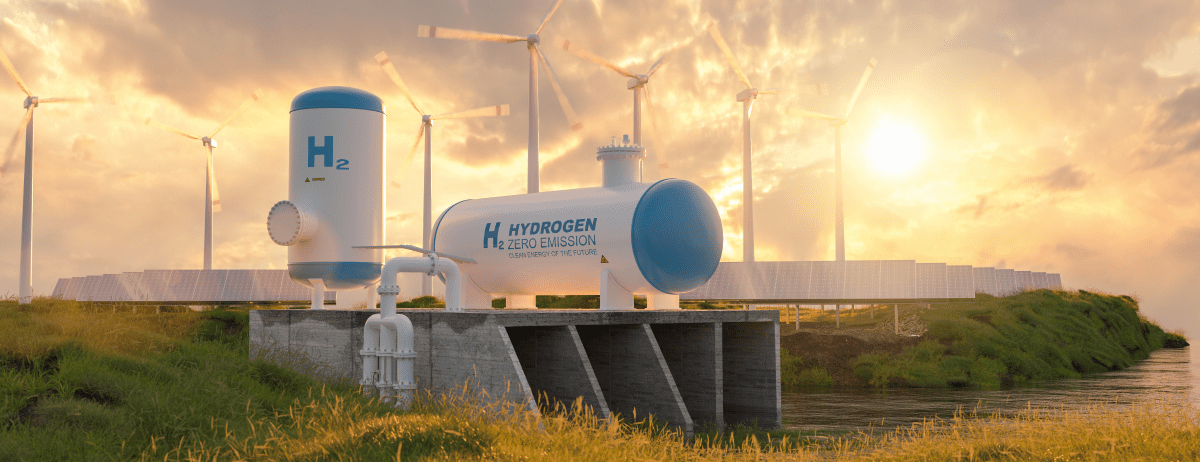Chapter 6: The Future of Agriculture
Climate change is threatening global food supplies. Our survival is at stake, but innovative technologies are transforming how we grow and secure our food.
For billions of years, hydrogen has fueled the stars. It’s everywhere—woven into water, hidden in fossil fuels, and scattered throughout the cosmos. The universe’s oldest and most abundant molecule could fundamentally reshape how we produce and consume energy. And yet, despite its ubiquity, we’ve barely tapped into its potential.
That might finally be changing.
In the heart of Alberta, Canada, an energy revolution is quietly taking shape. Edmonton’s Hydrogen HUB, Canada’s first and largest clean hydrogen initiative, is turning the region’s vast natural gas reserves into a new era of low-carbon fuel. By pairing hydrogen production with advanced carbon capture and storage (CCS), the project is positioning Alberta as a global leader in sustainable hydrogen development—cutting emissions while driving innovation, decarbonization, and economic growth.
With worldwide demand for hydrogen increasing, the global market could reach over $1.9 trillion by 2050.
- Natural Resources Canada, Hydrogen Opportunities: Key Findings (2025)
And it’s not just Canada. Across the world, hydrogen is stepping into the spotlight. In Europe, hydrogen-powered trains are replacing diesel. Airbus is designing hydrogen-fueled aircraft to eliminate emissions from aviation—one of the hardest industries to decarbonize. In Japan and South Korea, hydrogen fuel cell vehicles are hitting the roads, backed by a growing network of refueling stations. In Germany, steelmakers are shifting from coal furnaces to hydrogen-based processes, cutting emissions from one of the world’s dirtiest industries.
Hydrogen is proving it can do what batteries alone cannot. It can store energy indefinitely without degradation, power heavy machinery without massive battery packs, and refuel in minutes instead of hours. Unlike lithium-ion batteries—whose production strains mineral supplies and imposes high environmental costs—hydrogen can be extracted from water and moved through existing infrastructure. It’s the only clean fuel that burns like fossil fuels, but without the emissions.
From transportation to heavy industry, hydrogen could reshape our energy future. But we’ve heard that before.
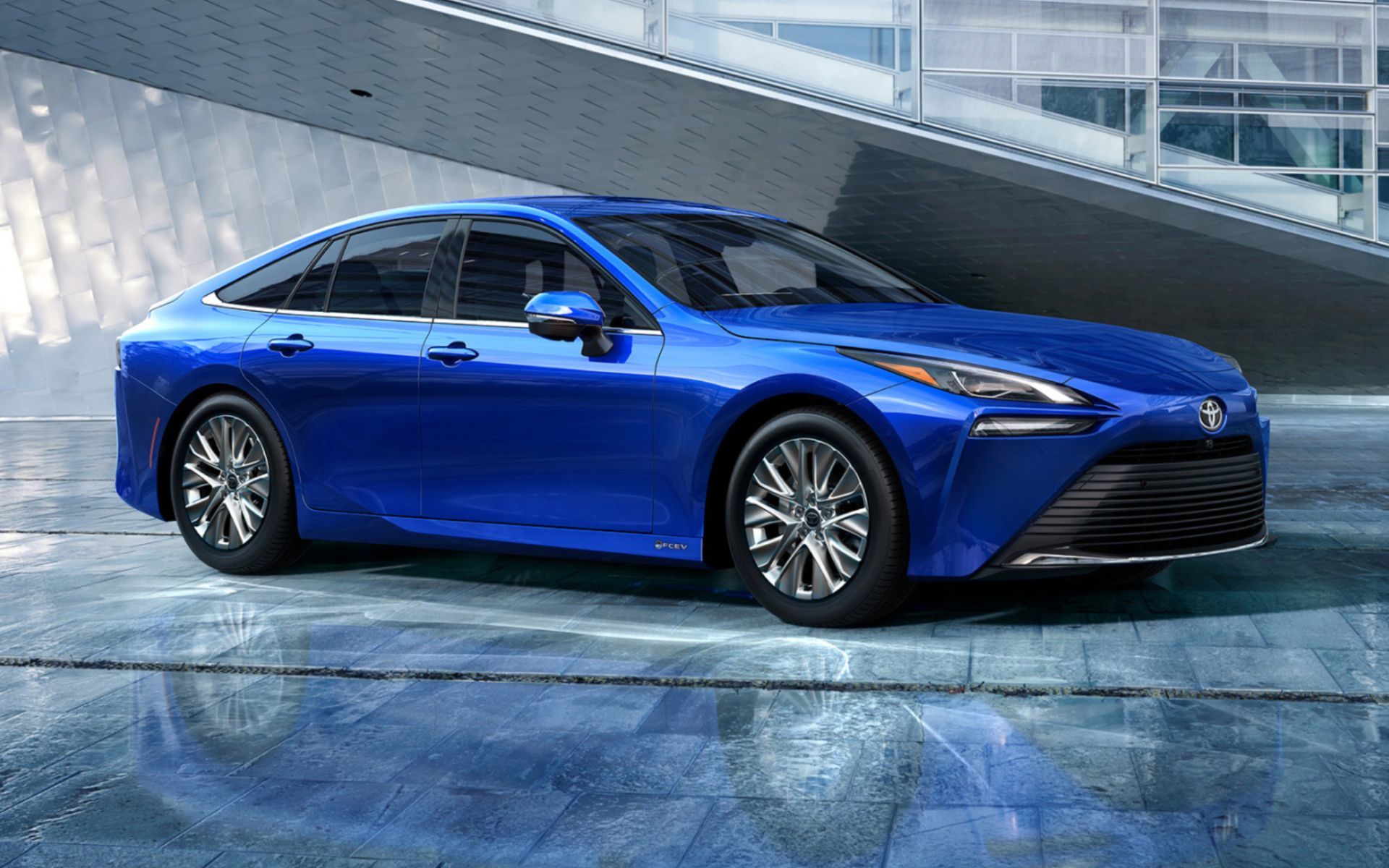



For decades, hydrogen has been hyped as the fuel of the future—only to be sidelined by high costs, infrastructure challenges, and political inertia. But there’s another reason it never took off: fear. From the fiery destruction of the Hindenburg to the devastating power of the hydrogen bomb, public perception has long associated hydrogen with disaster. The reality is far different—modern hydrogen systems are safer than gasoline or natural gas—but the stigma has been hard to shake.
Today, the numbers tell a different story. According to the U.S. Department of Energy, a hydrogen fuel cell coupled with an electric motor is two to three times more efficient than a gasoline engine. One kilogram of hydrogen provides as much energy as a gallon (2.8 kg) of gasoline—with a fraction of the emissions.
It’s clean. It’s powerful. And despite its struggles, momentum is building again.
Governments and industries are now pouring billions into hydrogen research, betting that this is the moment it finally breaks through. With global net-zero targets looming, we need solutions for industries that can’t easily be electrified. We need alternatives that are clean, scalable, and capable of powering the world’s most energy-intensive sectors.
Hydrogen may not be the only answer, but it’s one we can’t afford to ignore.
Hydrogen is the most abundant element in the universe. But here on Earth, it’s rarely found on its own. It’s almost always bonded to something—like oxygen in water (H₂O) or carbon in hydrocarbons like methane (CH₄) and coal. If we want to use hydrogen as a fuel, we have to extract it—and that takes energy.
There are a few ways to do this, but almost all of the hydrogen produced today comes from a process called steam methane reforming.
Steam methane reforming works by blasting methane (the main component of natural gas) with high-temperature steam. This breaks apart the methane, releasing hydrogen—the part we want—and carbon dioxide—the part we don’t.
The process happens in large industrial reactors at around 700 to 1,000 degrees Celsius. First, methane (CH₄) reacts with steam (H₂O) to produce hydrogen (H₂) and carbon monoxide (CO). Then, in a second reaction, the carbon monoxide reacts with more steam to create even more hydrogen—and carbon dioxide (CO₂).
If we let that carbon dioxide escape into the atmosphere, the result is what’s known as grey hydrogen. And it’s a major climate problem. Grey hydrogen is responsible for more than 900 million tonnes of CO₂ emissions globally each year—roughly 180 million more than the entire aviation industry.
But if we capture the CO₂ using carbon capture and storage (CCS) technology, we get blue hydrogen. It’s not perfect—CCS systems are designed to capture only up to 90 percent of emissions—but it’s a huge improvement over grey hydrogen. More importantly, it uses infrastructure we already have, and it can scale today.
That makes blue hydrogen a critical stepping stone. It’s not the endgame—but it gives us a way to start decarbonizing hard-to-electrify sectors right now, instead of waiting decades for green hydrogen to catch up.
Green hydrogen is the gold standard. It’s made through electrolysis—using renewable electricity to split water into hydrogen and oxygen. No emissions. No carbon. Just clean fuel.
The problem is electrolysis is energy-intensive and expensive. It takes about 50 kilowatt-hours to produce one kilogram of hydrogen—roughly enough electricity to almost fully charge a Tesla Model 3. And right now, renewable electricity is in high demand. We need it to power homes, charge vehicles, and decarbonize the grid. Using it to make hydrogen only makes sense when we have a surplus—which isn’t the case in most places today.
That’s why, despite all the hype, green hydrogen still accounted for less than one percent of global hydrogen production in 2023.
Scaling up won’t be easy. It requires vast amounts of renewable electricity—something the world is already struggling to generate fast enough for everything else we need to electrify. But there are promising pathways forward.
Green hydrogen could be most economical in locations that have the optimal combination of abundant renewable resources, space for solar or wind farms, and access to water.
- Geopolitics of the Energy Transformation: The Hydrogen Factor, IRENA (2022)
One approach is to tap excess renewable energy. Solar and wind don’t always match demand, and electrolyzers can be switched on during times of surplus. Instead of wasting that energy—or trying to store it in expensive, short-duration batteries—we can convert it into hydrogen that can be stored indefinitely and used later when the grid needs it most.
Hydroelectric power can also play a major role. Dams provide steady, low-cost electricity that can drive electrolysis without the variability challenges of solar and wind.
Canada is especially well-positioned to lead the world in green hydrogen production. With abundant freshwater, vast tracts of land for solar and wind development, and one of the world’s largest supplies of low-carbon hydroelectric power, Canada already has the raw ingredients to become a global leader. Where many countries will struggle to scale sustainably, Canada could thrive. What’s missing isn’t resources—it’s infrastructure and political will.
Even nuclear energy is part of the story. “Pink hydrogen,” produced from nuclear power, offers a clean, consistent source of electricity for electrolysis without the intermittency challenges that renewables face.
Eventually, as more countries invest in hydrogen infrastructure, we could see the rise of a global hydrogen export economy—shipping clean hydrogen around the world just as we do with oil and gas today. If we get it right, green hydrogen could become the backbone of industries that are hardest to electrify—decarbonizing parts of our economy that no other fuel can reach.
We’ve spent decades talking about clean energy. World leaders make grand promises, companies showcase sustainability initiatives, and the shift to renewables is well underway. But despite all of it, fossil fuels still dominate the global energy system.
As we explored in the last two chapters, nuclear and geothermal energy will be critical for decarbonizing power grids. But electricity is only part of the equation. The majority of global emissions don’t come from keeping the lights on—they come from how we travel and how we heat our homes.
Roughly 15 percent of global emissions come from transportation, while about 34 percent stem from electricity and heat production for buildings. In the U.S., natural gas use for heating and cooking accounted for 78 percent of emissions from the residential and commercial sector in 2022.
Almost all (95%) of the world’s transportation energy comes from petroleum-based fuels, largely gasoline and diesel.
- United States Environmental Protection Agency, Global Greenhouse Gas Overview (2024)
Transportation remains overwhelmingly dependent on oil, with cars, trucks, ships, and planes still burning fossil fuels at an unsustainable rate. Home heating is another major culprit, with millions of households—especially in Canada—still running on natural gas, oil, or propane. While electric heating is gaining traction in new buildings, retrofitting older buildings, or relying on intermittent renewable power, often isn’t practical.
The reality is, we can’t just electrify everything.
Battery-electric vehicles (BEVs) are a crucial piece of the puzzle, but they aren’t a perfect solution. They rely on lithium-ion batteries—and lithium mining is already straining global supplies. Extracting lithium requires massive amounts of water and energy, often in regions least equipped to absorb the environmental damage.
Even if we could source enough lithium to replace every gas-powered car, we would still need far more electricity to charge vehicles, run heat pumps, and replace every fossil-fuel-powered system across the global economy.
For every tonne of lithium hydroxide refined in China using Australian lithium ore, about 14.8 tonnes of CO₂ are released into the atmosphere.
- Resources, Conservation and Recycling (2021 Study)
This is why hydrogen is so critically important.
Hydrogen has the potential to step in where electrification struggles. Unlike lithium-ion batteries, hydrogen can be stored indefinitely without losing energy over time, making it ideal for balancing intermittent renewables like solar and wind. It can also deliver the kind of dense, portable energy needed for sectors batteries can’t easily serve—like long-haul trucks, cargo ships, and aviation.
Instead of relying on massive, heavy battery packs, hydrogen fuel cells deliver the same energy without dramatically increasing weight or cutting into cargo space. In homes, hydrogen could be blended into existing natural gas pipelines, lowering emissions without requiring every household to undergo costly retrofits. And when used in a fuel cell, hydrogen’s only emission is water.
Of course, hydrogen isn’t a silver bullet. It’s still expensive to produce, difficult to store, and the infrastructure to support it is still nascent. But as the urgency to phase out fossil fuels grows, governments and industries are investing billions into hydrogen as a critical piece of the solution. It’s not a question of whether hydrogen will have a role to play—it’s a question of where it makes the most sense to use it.
Battery-electric vehicles (BEVs) have come a long way in the last two decades. They’re quiet, efficient, and far cheaper to operate than gas-powered cars. The ability to “fuel up” at home is a game-changer. For millions of drivers, they’re already more than good enough. But as we push deeper into an electrified future, the cracks are starting to show.
Charging takes too long. Range drops sharply in cold weather. Battery packs are heavy, degrade over time, and rely on minerals like lithium, cobalt, and nickel—materials that are hard to recycle, and often environmentally destructive and costly to extract. Worse still, much of the world’s electricity is still generated from fossil fuels. Charging a zero-emission car with coal-powered electricity isn’t exactly helping the climate. And we don’t have enough economically viable lithium to electrify every vehicle on Earth.
Hydrogen fuel cell vehicles (FCEVs) offer a different path forward.
All lithium-ion batteries degrade with use and eventually need to be replaced…and the cost of replacing an EV battery can exceed $15,000.
- Scientific American, “EV Batteries Are Dangerous to Repair” (2023)
Instead of storing electricity, FCEVs generate it on demand by combining hydrogen with oxygen from the air. They refuel in minutes, not hours. They don’t lose performance in the cold. They don’t rely on massive batteries full of rare minerals. Hydrogen holds more energy per kilogram than lithium-ion batteries, so vehicles can go farther without the bulk. And their only emission is water vapor.
For heavy-duty transport—trucks, buses, cargo ships, even airplanes—hydrogen has the edge. Fuel cells are lighter, more energy-dense, and more resilient in harsh conditions. That matters when you’re hauling freight across continents or trying to keep transit running through a Canadian winter.
There’s a tendency to treat energy solutions like rival sports teams—hydrogen vs. batteries, solar vs. nuclear, this vs. that. But the reality is, we need all of them. The question isn’t which technology wins. It’s where each one fits best. For short trips and daily commutes, BEVs are tough to beat. But for long-haul transport, cold climates, or regions without robust charging infrastructure, hydrogen offers something batteries can’t.
The future isn’t battery or hydrogen—it’s both, working in tandem where each makes the most sense.
When we talk about cutting emissions, transportation and power generation usually steal the spotlight. But heating buildings—especially in colder climates—is a massive part of the problem.
Across Canada, the U.S., and much of Europe, millions of homes still rely on natural gas, heating oil, or propane. It’s easy to overlook, but the emissions add up fast. In some regions, heating produces more carbon than electricity. And while electric heat is growing, most of that growth is happening in new construction.
The buildings sector represents 40 per cent of Europe’s energy demand, 80 per cent of it from fossil fuels.
- United Nations Environment Programme (UNEP Press Release, November 2022)
Heat pumps offer a clean, efficient solution. Unlike furnaces that burn fuel to generate heat, heat pumps work like a refrigerator in reverse—moving heat from outside to inside. They also double as air conditioners. Because they move heat rather than create it, they’re far more efficient—even in sub-zero climates.
But retrofitting older buildings is another story. It often means upgrading electrical panels, improving insulation, and replacing ducts—all of which can be expensive or logistically challenging. Even in regions where heat pumps work well, adoption is slow due to cost, space constraints, and limited grid capacity. Heat pumps can also cost upwards of $10,000, even after government rebates. That’s a hard sell when natural gas is already heating your home reliably and affordably.
That’s where hydrogen enters the conversation.
Because it burns similarly to natural gas, hydrogen can be blended into existing pipelines or used in modified boilers—offering a way to reduce emissions without ripping out legacy infrastructure. In theory, it’s a practical way to decarbonize home heating without forcing major lifestyle changes. It delivers fast, on-demand heat and many of the same benefits people associate with natural gas—especially in regions where electric retrofits may be out of reach.
But in practice, it’s more complicated. In the U.K., government-backed pilots to switch entire neighborhoods to hydrogen for heating and cooking were shelved after strong public opposition. Residents feared the cost, the safety risks, and being treated like unwilling test subjects. That fear is understandable—and it remains one of hydrogen’s biggest obstacles to adoption.
The scientific evidence concludes that at best hydrogen will play a niche role for heating buildings. Evidence suggests heating with hydrogen is less efficient and more costly than electrification.
- Cell Reports Sustainability, “A meta-review of 54 studies on hydrogen heating” (2024)
Hydrogen may not be the best option from an efficiency standpoint—but the best solution doesn’t always drive adoption. Heat pumps are ideal in new construction. District heating works well in dense cities. But in rural areas, cold climates, and regions with entrenched natural gas systems, asking people to abandon what works can feel more like punishment than progress. Telling millions of homeowners to rip out functioning systems and pay more to retrofit is a tough sell—especially in communities where fossil fuels are tied to prosperity, pride, and identity.
Hydrogen offers a middle ground.
It’s less efficient and more expensive than electricity. But it allows regions to cut emissions without placing the full burden of retrofits on homeowners—though households would still need to switch to hydrogen-compatible appliances eventually. Crucially, it doesn’t demand sweeping lifestyle changes. That sense of continuity may matter—especially in areas where electric retrofits are unaffordable or impractical. For households resistant to change, hydrogen could provide a cleaner path forward that still feels familiar.
In the short term, that may mean relying on blue hydrogen—produced from natural gas with carbon capture—while green hydrogen infrastructure scales up. In the long term, hydrogen makes sense only in specific contexts: where heat pumps won’t work, district heating isn’t viable, and retrofits are out of reach.
There’s no one-size-fits-all answer. Some homes will run on electric heat. Others will tap into geothermal or district systems. And in certain cases, hydrogen will be the right tool—not because it’s perfect, but because it works well enough to move the needle.
Progress doesn’t always mean choosing the most efficient path. Sometimes, it means choosing the one people are most likely to walk.
To unlock hydrogen’s full potential, we need more than isolated pilot projects—we need a national strategy. That means investing in infrastructure that makes hydrogen practical, scalable, and cost-effective. Two major opportunities stand out: building a network of hydrogen refueling stations along key transportation corridors—so hydrogen-powered trucks and cars can travel across the country with confidence—and upgrading our natural gas pipelines to carry low-carbon hydrogen across provinces. Together, these investments could transform Canada into a clean energy leader—powering vehicles, heating homes, and future-proofing entire industries.
The Trans-Canada Highway stretches nearly 7,500 kilometers, from Victoria, British Columbia to St. John’s, Newfoundland. It’s one of the longest national roadways in the world. What if it could also become a symbol of our clean energy future?
One of the biggest barriers to zero-emission vehicles—whether battery-electric or hydrogen fuel cell—isn’t the vehicles themselves. It’s infrastructure. If drivers can’t confidently get from Calgary to Vancouver—or Toronto to Halifax—without knowing they’ll be able to recharge or refuel, many will stick with gasoline and diesel.
A national “green energy highway” would change that. With a coast-to-coast network of EV chargers and hydrogen stations, range anxiety would fade, and zero-emission travel would become a practical reality. The highway already exists. Now we need to make it work for the vehicles of the future.
If we built the equivalent of one fast-charging station—capable of delivering a full charge in about half an hour—every half kilometer along the Trans-Canada Highway, we’d need about 15,000 stations. With effective carbon pricing and a federal government willing to reinvest in clean energy, it’s entirely doable—and surprisingly affordable. At less than $2 billion, the total price tag is a fraction of the $34 billion the federal government invested to expand the Trans Mountain oil pipeline from Alberta to the B.C. coast.
Public infrastructure spending delivers strong returns: each dollar boosts GDP by $1.43 in the short term and up to $3.83 over time, creates 9.4 jobs per $1 million invested, stimulates private investment, and recovers $0.44 through additional tax revenue.
- The Economic Benefits of Public Infrastructure Spending in Canada, Broadbent Institute (2015)
Battery-electric vehicles (BEVs) are an essential part of a clean transportation future, but they’re not the whole picture. Hydrogen fuel cell vehicles (FCEVs) offer longer range and faster refueling—key advantages for long-haul freight. The challenge is that hydrogen fueling stations are nearly nonexistent in Canada. Supporting both technologies requires smart infrastructure and strategic investment.
One solution is to install small-scale electrolysis systems at roadside stations powered by solar and wind. These systems use clean electricity to split water into hydrogen and oxygen, compress the hydrogen, and store it on-site. No pipelines, no tanker trucks—just electricity, water, and space. Their output is modest but ideal for early adoption, when demand is still low and regionally clustered.
Both BEVs and FCEVs need clean electricity to function—and highways offer the perfect real estate. Installing solar panels along the roadside could generate 2 to 6 megawatts of capacity per kilometer. That’s more than enough to power a nationwide green hydrogen refueling network using only a fraction of the Trans-Canada Highway.
At full capacity, a network of 780 electrolysis stations—one every 10 kilometers—could produce enough hydrogen to refuel a Toyota Mirai over 3.4 million times. That’s tens of thousands of vehicles supported each year, even in the early stages of adoption.
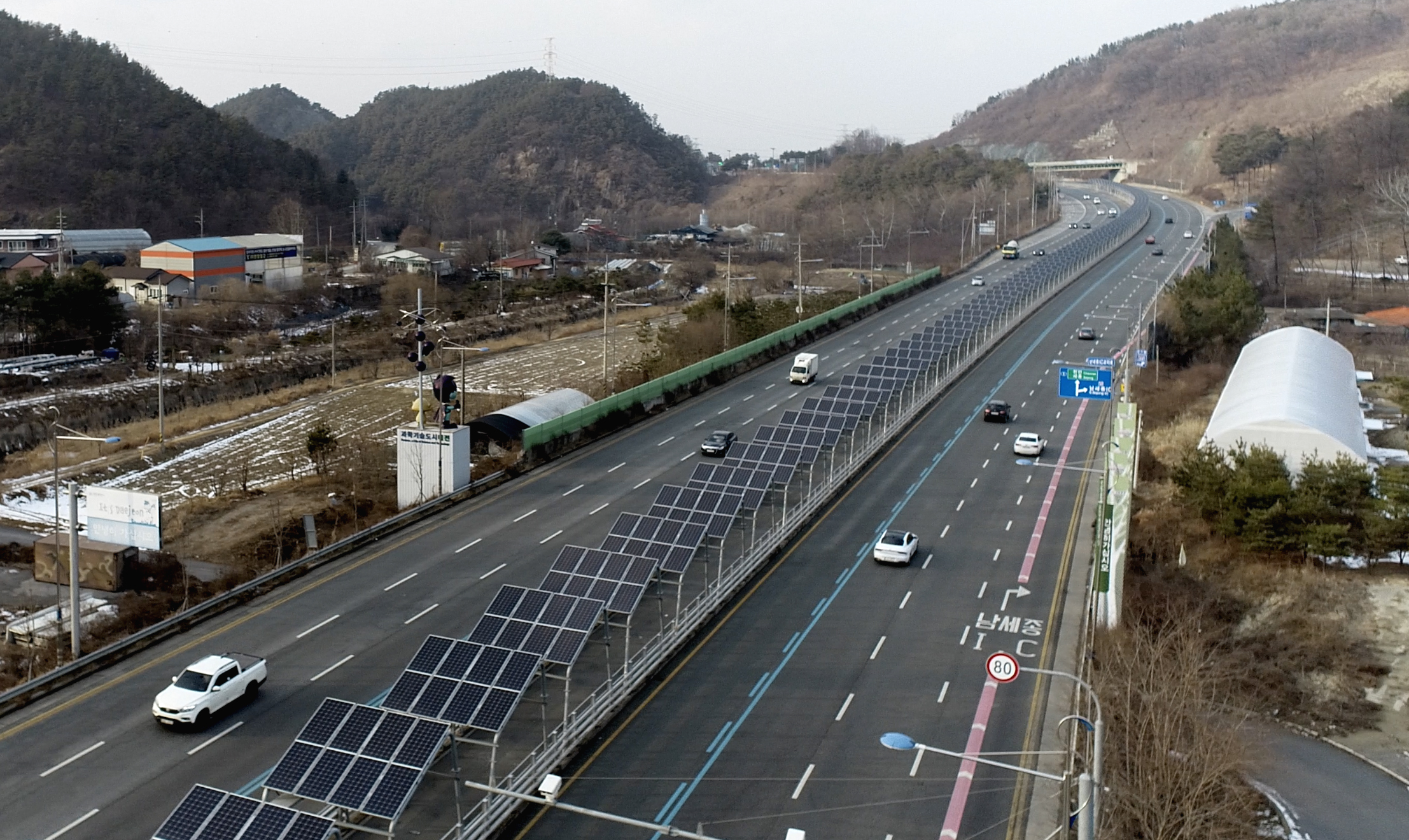
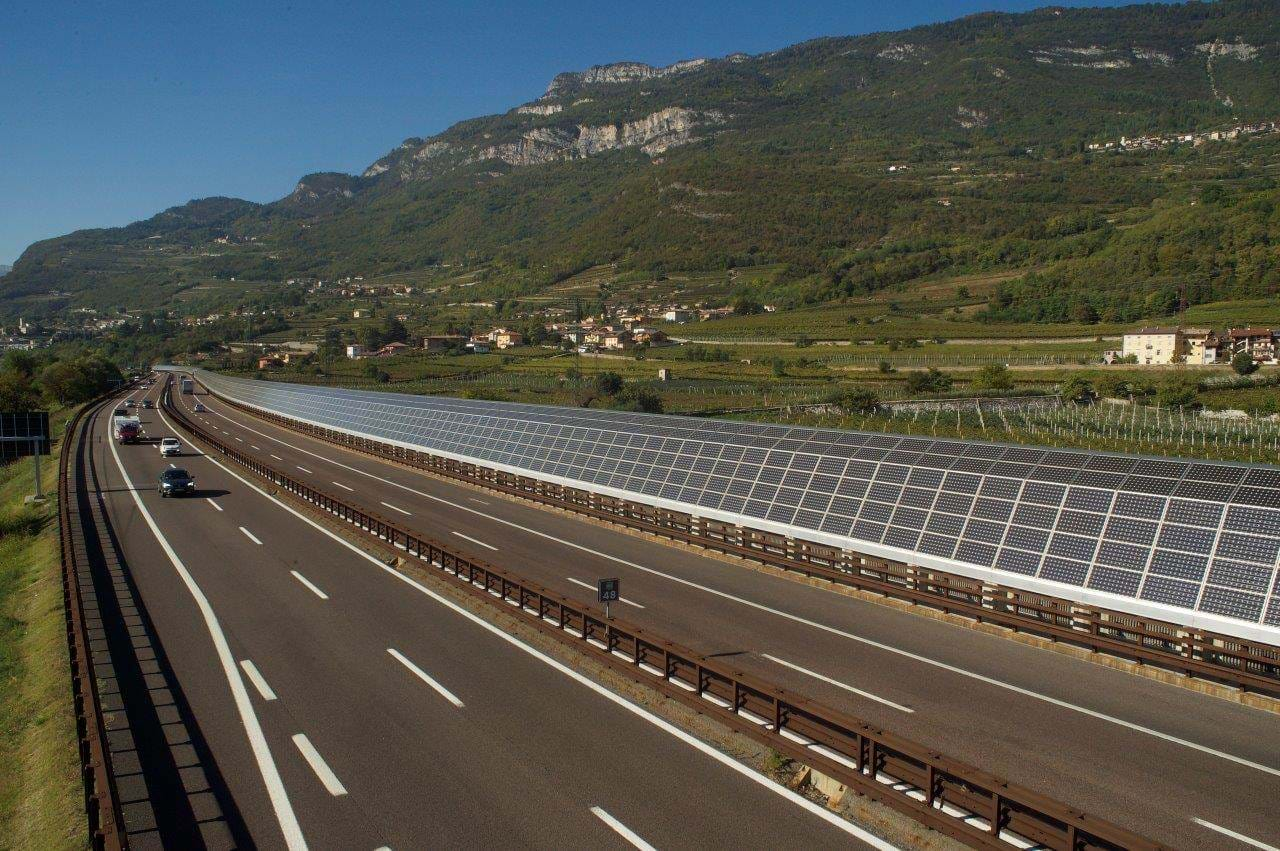
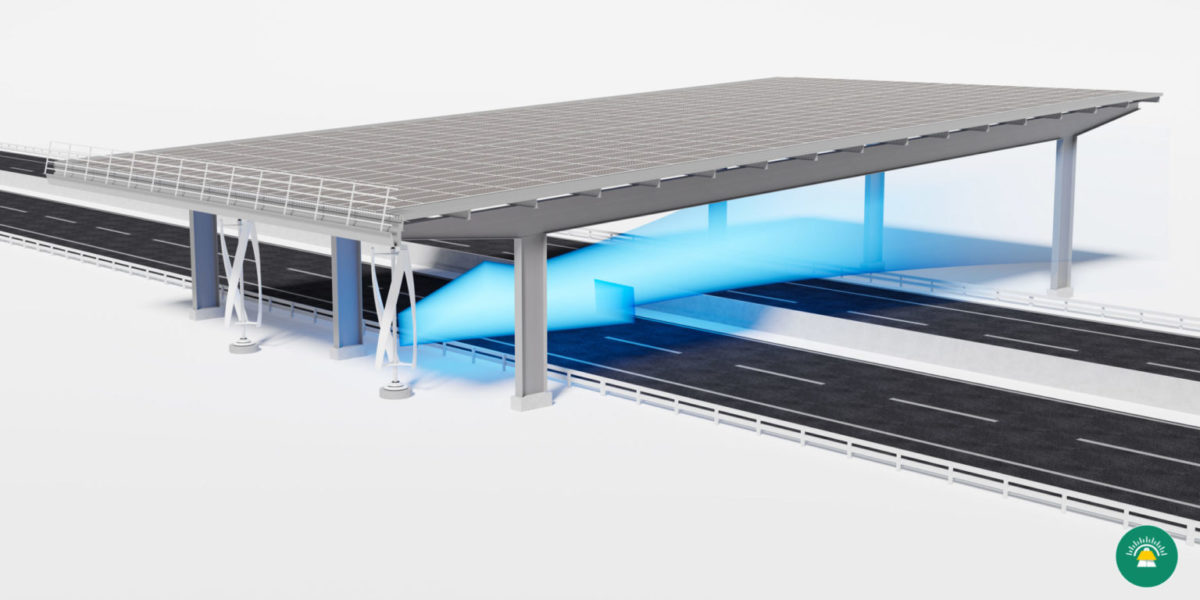
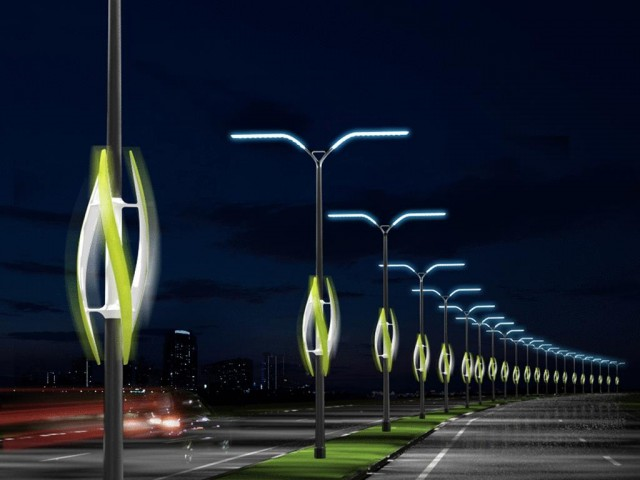
Around the world, transportation corridors are evolving. In South Korea, solar bike lanes generate electricity and provide shade. In Italy, solar panels line highway sound barriers. Switzerland is testing hybrid solar-wind systems. Even streetlights are being redesigned to capture wind from passing vehicles. These aren’t novelties—they’re the future of infrastructure.
Canada has a chance to lead. By transforming our highways into clean energy corridors, we can slash transport emissions, unlock new industries, and build confidence in a zero-emission future. Just as we use tax dollars to build and maintain the roads, we can use those funds to also power what drives on them.
Yes, it will take investment. But the costs are within reach—and the returns could be transformational. In Chapter 10, we’ll break down what it would take, what it would cost, and how we can fund it without placing the burden on everyday Canadians.
We didn’t wait for private companies to build highways before people started buying cars. We built the roads first. Infrastructure didn’t follow the market. It created it. And the same is true today. If we want a clean transportation future, we can’t rely on the private sector to deliver that future without public support.
We already have the road. Now it’s time to build what drives it forward.
Hydrogen highways are a great start. They tackle range anxiety and improve visibility, helping people imagine a zero-emission future. But they’re only the beginning. To truly scale a hydrogen economy—to supply not just vehicles but homes, factories, and entire provinces—we need to move hydrogen reliably, affordably, and at volume. That means pipelines.
Fortunately, Canada already has a vast natural gas pipeline network stretching across the country. Much of it can be repurposed or upgraded to carry hydrogen, dramatically reducing the cost and complexity of building a brand-new distribution system. Some older steel and cast-iron lines would need reinforcement or replacement to prevent hydrogen embrittlement, but much of the infrastructure—especially in Alberta, Saskatchewan, and B.C.—can be adapted with the right investment.
That investment won’t be small. Upgrading pipelines and expanding hydrogen-ready infrastructure could cost as much as $15 billion CAD per year over the next two decades. But the payoff would be transformative. A modern pipeline network could deliver hydrogen to where it’s needed most—urban centres, industrial hubs, and rural communities—enabling everything from residential heating to steelmaking. In sectors where electrification falls short, hydrogen offers a clean alternative to natural gas.
It’s already begun in Alberta, where 100 kilometers of pipelines are already capable of transporting pure hydrogen for industrial use. This early infrastructure proves the concept is both viable and scalable. Alberta’s oil and gas sector brings decades of experience building, operating, and maintaining pipelines, along with a skilled workforce that can be rapidly retrained to support hydrogen. It’s not just a proof of concept—it’s a head start.
Canada ranks among the world’s lowest-cost hydrogen suppliers, leads in pipeline innovation, and counts Alberta among the top hydrogen-producing regions globally.
- Journal of Pipeline Science and Engineering (2023), via ScienceDirect
Pipelines could also unlock Alberta’s long-sought energy export potential. For years, the province has battled legal and political obstacles trying to get oil and gas to market—even with major trading partners like the United States. Hydrogen presents a different story. As a clean-burning fuel with rising global demand, hydrogen is far more likely to earn public and political support. By embracing blue hydrogen, Alberta could continue monetizing its natural gas reserves—while cutting emissions and sidestepping the backlash that has plagued fossil fuel projects.
That doesn’t make pipelines a silver bullet. They still require major public and private investment, regional coordination, and clear-eyed planning. But without them, the hydrogen economy remains fragmented—limited to expensive, small-scale solutions. With them, we gain a scalable, resilient, cross-country energy network.
Canada already has over 500,000 kilometers of natural gas pipelines in the ground. Not all can be converted—but many can. And doing so could cost far less than building new ones. Chapter 10 will explore what that transition could look like—the costs, the timelines, and the payoff. For now, hydrogen pipelines offer a practical path forward. They’re one of the fastest, most affordable ways to bring clean energy to every corner of the country—and beyond.
Hydrogen holds enormous potential—but unlocking it won’t be easy. Decades of research have brought the technology forward, and political momentum is finally building. But serious challenges remain. Some are technical. Others are economic, regulatory, or cultural. All are solvable, but only with clarity, coordination, and commitment.
Cost is one of the most pressing barriers. Hydrogen infrastructure—from electrolyzers to fueling stations and the renewable energy systems that power them—is still expensive. Vehicles powered by hydrogen fuel cells also come with a higher price tag than battery-electric or gasoline models. Green hydrogen, produced using renewable electricity, is the cleanest form but also the most costly. Blue hydrogen, made from natural gas with carbon capture, is more affordable—but carries baggage due to its fossil fuel ties.
Until recently, Canada had a way to pay for these systems: the federal consumer carbon tax. By 2030, it was projected to generate $37 billion annually. But because it was designed to be revenue-neutral, most of the money went back to households through rebates rather than into energy infrastructure. That policy was repealed in 2025 under political pressure, but the core idea remains valuable. A well-designed pricing mechanism—not necessarily identical to what came before—could fund the infrastructure needed to transition away from fossil fuels.
Low-emissions hydrogen will remain expensive in the short term, but costs are expected to fall significantly.
- International Energy Agency, Global Hydrogen Review 2024
Infrastructure is another critical hurdle. Canada lacks a national network of hydrogen fueling stations and has no dedicated hydrogen pipelines. This absence of infrastructure creates a self-reinforcing problem: consumers and businesses hesitate to adopt hydrogen technologies because there’s nowhere to fuel or supply them, and infrastructure builders hesitate because demand isn’t yet there. Breaking this deadlock requires public investment, private-sector cooperation, and long-term policy stability.
Safety concerns also shape public perception. Although hydrogen has been used safely in industrial settings for decades, its properties raise new challenges in consumer applications. It’s highly flammable, ignites easily, and burns with an almost invisible flame. These characteristics complicate emergency response and fuel lingering public fear. One way to address this is to blend a small amount of natural gas—about 5 percent—into hydrogen supplies, making the flame visible without adding substantial emissions. It’s a pragmatic step as dedicated hydrogen appliances and safety protocols evolve.
Policy gaps add further friction. While Canada has made strides in supporting clean energy and carbon pricing, it still lacks a coordinated national hydrogen strategy. Rules around hydrogen blending differ between provinces, and there’s no unified regulatory framework for hydrogen appliances, storage systems, or distribution networks. These inconsistencies create uncertainty for investors and slow down deployment.
In some countries well positioned for production, it will be possible to produce green hydrogen at a lower cost than blue hydrogen by the end of this decade.
- Institute for Energy Economics and Financial Analysis (IEEFA, 2025)
Even the technology itself poses challenges. Hydrogen is the smallest molecule in the universe—it leaks easily, requiring high-pressure storage and transport. It must be compressed or liquefied to move efficiently, increasing both cost and complexity. Over time, it can weaken certain metals through a process called hydrogen embrittlement, meaning pipelines and tanks often need to be reinforced or replaced. And unlike electricity, which flows through wires instantly, hydrogen must be physically delivered—by truck, pipeline, or ship—creating logistical constraints that electricity avoids.
Trust remains one of the most elusive roadblocks. Hydrogen is unfamiliar to most people, and public perception is often shaped by fear rather than facts. The shadow of the Hindenburg disaster still lingers in the cultural imagination, even though modern hydrogen systems are vastly safer. Skepticism exists on both sides of the political aisle. Some environmental advocates worry hydrogen is a smokescreen for continued fossil fuel use. Some conservatives question the urgency of climate action altogether.
These challenges are real—but none are insurmountable. Solar, wind, and electric vehicles faced many of the same doubts and roadblocks. They succeeded not because the problems were small, but because we chose to solve them. The same can be true for hydrogen—if we treat the transition not as a gamble, but as a step-by-step process, grounded in policy, planning, and public trust.
Hydrogen may feel like a future-facing solution, but around the world, it’s already being put to work. Countries and companies aren’t waiting for perfection—they’re building now. The hydrogen revolution has already begun.
Germany is going all-in, investing billions to cut its dependence on Russian gas. It’s repurposing old pipelines into a 9,000-kilometre national hydrogen backbone, more than half of which will use existing fossil gas infrastructure.
Japan and South Korea are already deep into deployment, leading the world in hydrogen fuel cell vehicles and infrastructure. Their governments have rolled out national hydrogen strategies, and fuel cell buses and public fueling stations are part of daily life in Tokyo and Seoul.
In the U.S., billions were committed to building regional hydrogen hubs—networks designed to anchor local production, infrastructure, and end-use applications like long-haul trucking and heavy industry. While recent policy shifts during the Trump administration’s second term have cast some doubt over what the future will hold, many projects continue, backed by state leadership and private-sector investment.
The European Union is pushing hydrogen across multiple fronts. Hydrogen-powered trains, transit corridor fueling stations, and investments in hydrogen-based steel production to phase out coal.
It is forecasted that hydrogen could provide up to 24% of global energy demand by 2050, growing to almost 700 million tons per year.
- Journal of Pipeline Science and Engineering (2023), via ScienceDirect
In Canada, Alberta is taking the lead. The province is exploring hydrogen as a natural gas replacement and is home to one of the largest planned hydrogen production facilities in the world. Canadian engineering firms are already exporting expertise to U.S. projects. But compared to our global peers, Canada is still moving cautiously. We have the potential to lead—but not if we hesitate.
Automakers like Toyota and Hyundai continuing to invest heavily in fuel cell vehicles—not as replacements for batteries, but as complements. In aviation, Airbus and Boeing are prototyping hydrogen-powered aircraft to clean up the skies.
In heavy industry, multinational European steelmakers like ArcelorMittal, Thyssenkrupp, and SSAB are shifting from coal to hydrogen-based production—a change that could revolutionize one of the dirtiest sectors in the world.
And while global fueling infrastructure is still limited, it’s growing fast. California, Germany, and South Korea are rapidly expanding their hydrogen networks to support commercial fleets and private vehicles alike.
Germany has decided to build a 9,000 kilometre-long hydrogen network. More than half of the network will be repurposed fossil gas pipes. The plan comes with a price tag of €19 billion and will be fully completed in 2032.
- The Brussels Times, Germany’s Big Hydrogen Bet (2024)
The pieces are falling into place—but scale is still the missing piece. Costs need to keep falling, especially for green hydrogen. Infrastructure must expand rapidly. Policy support needs to be stable and long-term. And most critically, we need to move beyond pilot projects and start building at scale.
Hydrogen won’t solve everything. But in the sectors where electrification can’t reach, it might be the best tool we’ve got. The world is moving. The question now is whether we’ll lead—or get left behind.
Hydrogen comes with a host of challenges. It’s inefficient. It’s expensive. And it’s complicated. Converting electricity into hydrogen and then back into energy involves significant losses at every step. Green hydrogen remains far costlier than fossil fuels. Blue hydrogen, while cheaper, still relies on carbon capture systems that aren’t yet proven at scale. And storing or transporting hydrogen presents logistical hurdles we don’t face with other fuels. Even among climate advocates, there’s debate over whether it’s worth the effort at all.
So why pursue it, then?
Because despite its flaws, hydrogen offers something rare: flexibility. It can be stored. It can be transported. It can power vehicles, heat homes, fuel industry, and even back up the grid when the sun isn’t shining and the wind isn’t blowing. It’s one of the only viable options for decarbonizing sectors that electrification can’t easily reach—like heavy transport, steelmaking, and industrial heat. And just as importantly, it offers a lifeline to regions whose economies are built on oil and gas, giving them a stake in the transition rather than a reason to resist it.
Even with its inefficiencies, hydrogen has a role to play—not because it’s perfect, but because it’s pragmatic. Critics are right: using renewable electricity directly is far more efficient than converting it into hydrogen. Producing blue hydrogen from natural gas wastes energy. The concerns about cost, waste, and infrastructure are valid. But those truths exist alongside another: we do not live in a world that runs on efficiency alone.
Hydrogen is today enjoying unprecedented momentum. The world should not miss this unique chance to make hydrogen an important part of our clean and secure energy future.
- Dr. Fatih Birol, The Future of Hydrogen (IEA Analysis, 2019)
We live in a world of jobs. Of livelihoods. Of communities whose identities are deeply tied to oil and gas—where workers are proud of what they’ve built and fearful of what they might lose. If the clean energy transition is seen as a threat to people’s ability to support their families, it will face resistance—and rightly so. When people are forced to choose between environmental ideals and putting food on the table, they’ll choose their families every time. And so would you.
The oil and gas industry won’t go quietly. It will fight to remain relevant—and in many ways, it already is, positioning hydrogen as its bridge to the future. That may seem cynical or self-serving, but it doesn’t mean it can’t also serve the public good. Rather than trying to dismantle the sector piece by piece, what if we redirected that effort? What if we worked with it—leveraging its expertise, infrastructure, and workforce—to build something better? What if we could turn the oil and gas industry into an engine of the clean energy future, rather than a relic of the past?
We can’t let the pursuit of a perfect solution stand in the way of a good one. That doesn’t mean settling. It means understanding that any serious transition must work for everyone—not just the idealists and environmentalists, but also the workers, tradespeople, and rural communities who keep this country running. For all its imperfections, hydrogen may be one of the most effective tools we have to bridge the divide between progress and tradition—between those demanding rapid change and those afraid of being left behind.
We won’t build a perfect energy system overnight. But if we stop fighting each other and start building together, we just might create a better one.
Curious about why I wrote this book? Read my Author’s Note →
Want to dive deeper? A full list of sources and further reading for this chapter is available at: www.themundi.com/book/sources
Help shape the future! Sign up to receive behind-the-scenes updates, share your ideas, and influence the direction of my upcoming book on climate change.
